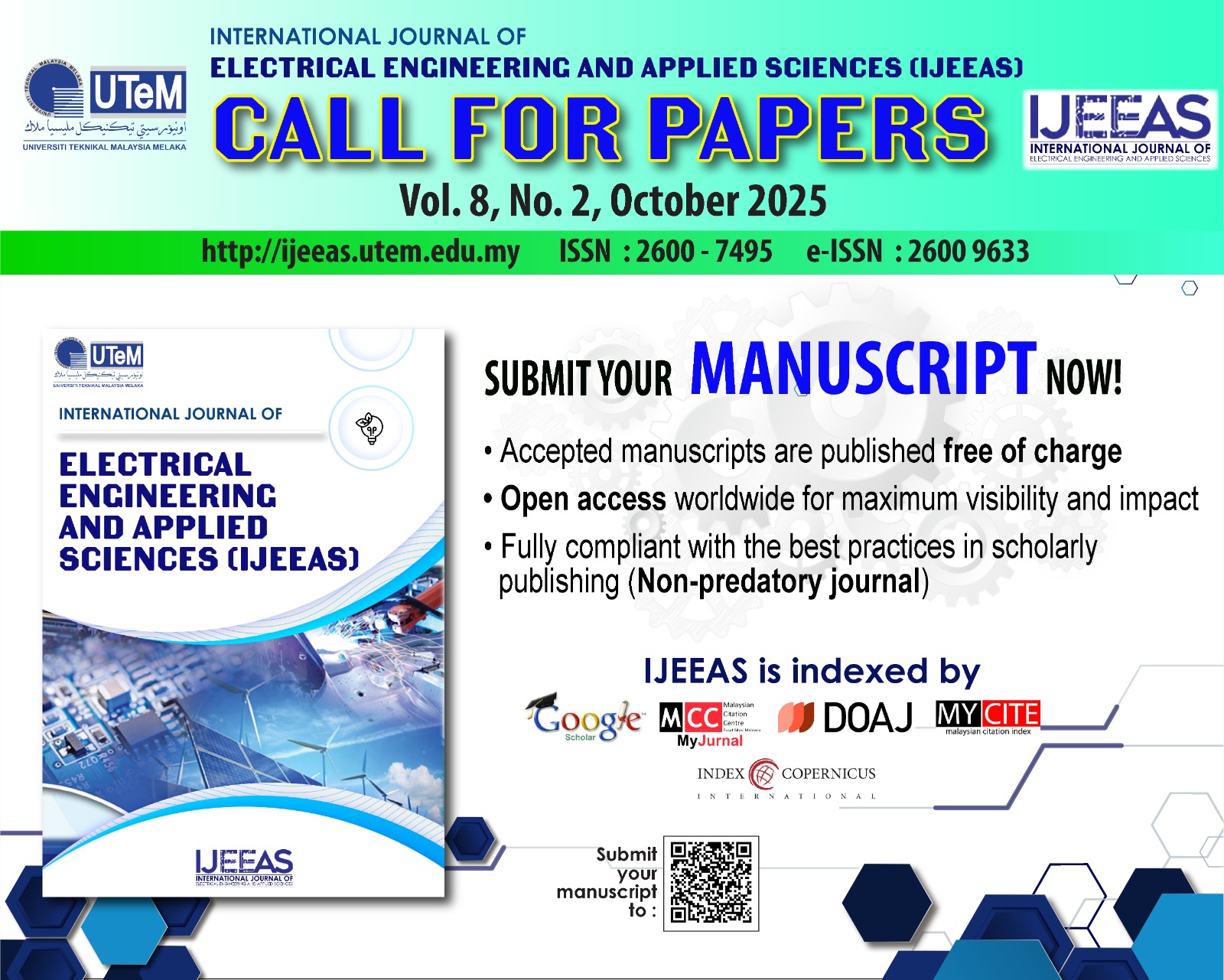Power Quality Issue of Grid Connected DFIG Wind Farm System
Keywords:
Induction machine (DFIG) system, Power quality issues, Voltage disturbances, Wind farmAbstract
Quality of power is known as any power problem manifested as a non-standard frequency, current and voltage which cause failure of end customer apparatus. The wind utilization, generation and its penetration in utility grid are increasing worldwide. One of the master issues in wind generation is the insertion to the network. When the wind energy is injected to the grid generally controls the voltage disturbances on the system power quality, variation of voltage is the almost prevalent kind of disturbance which affects stability and the quality of power for grid-inserted wind system. This study investigates the two widespread kinds of voltage variations such as voltage dip and swell, which can happen if large amount of wind system is connected to an electrical grid. This research also studies the response and performance under faults of a wind farm inserted to distribution systems. In this paper, a wind turbine with induction machine (DFIG) is simulated by using MATLAB/Simulink program. The simulated model is subjected to disturbances which known as; voltages (dip and rise). The results of simulation presents that, how both variations; voltage dip & voltage rise lead to mal-operation as well as shut-down of entire system, therefore deteriorating the improvement of power quality for the grid.Downloads
References
References
Nazir M, Wu Q, Li M. Symmetrical short-circuit parameters comparison of DFIG–WT. International Journal of Electrical and Computer Engineering Systems. 2017; 8: 77-83.
Subramanian Ch, Casadei D, Tani A, Rossi C. Modeling and Simulation of Grid Connected Wind Energy Conversion System Based
on a Doubly Fed Induction Generator (DFIG). International Journal of Electrical Energy. 2014; 2: 161-166.
Jerin R, Prabaharan N, Palanismy K, Umashankar S. FRT Capability in DFIG based wind turbines using DVR with Combined Feed-Forward and Feed-Back Control. Energy Procedia. 2017; 138: 1184-1189.
Mohod S, Aware M. A STATCOM Control Scheme for Grid Connected Wind Energy System for Power Quality Improvement. IEEE Systems Journal. 2010; 4: 346-352.
Valentine S. Understanding the variability of wind power costs. Renewable and Sustainable Energy Reviews. 2011; 15: 3632– 3639.
Kirmani S, Kumar B. Power quality improvement by using STATCOM control scheme in wind energy generation interface to grid", International Conference on Power and Energy Engineering. 2018; 114: 1-10.
Ceyhun Y, et al. Power Quality Measurement and Evaluation of a Wind Farm Connected to Distribution Grid. Procedia - Social and Behavioral Sciences, 2015; 195: 2370 – 2375.
Gaona D, Goytia E, Lara O. Fault Ride-Through Improvement of DFIG-WT by Integrating a Two-Degrees-of-Freedom Internal Model Control. IEEE Transactions on Industrial Electronics, 2013; 60 (3): 1133-1145.
Khajeh A, Ghazi R, Abardeh M. Implementation of the Maximum Power Point Tracking Algorithm on Indirect Matrix Converter Controlled DFIG wind Turbine. The 4th International Conference on Renewable Energy and Distributed Generation, Iran, Mashhad; 2016: 11-15.
Safaei, A., Hosseinian, S., Abyaneh, H.: “Investigation and enhancement of SFCL impacts on DFIG‐based wind turbine during fault and post‐fault", Int. Trans. Electr. Energ. Syst., Wiley. 2016: 1-13.
Pfister P, Perriard Y. Torque Measurement Methods for Very High Speed Synchronous Motors. Proceedings of the 2008 International Conference on Electrical Machines; 2008: 1-5.
Whitby B, Ugalde-Loo C. Performance of Pitch and Stall Regulated Tidal Stream Turbines. IEEE Transactions on Sustainable Energy. 2014; 5 (1): 64-72.
Kadandani N, Maiwada Y. Impact of Voltage Sag and Swell on the Power Quality of Grid Connected Wind Power Plant. the International Journal of Engineering and Science (IJES). 2015; 4 (7): 56-64.
Zhong Q, Ma Z, Ming W, George C. Grid-friendly wind power systems based on the synchronverter technology. Energy Conversion and Management journal. 2015; 89: 719–726.
Mohammed S, Abdel-Moamen M., Hasanin B. Analysis, Modeling and Simulation of Dynamic Voltage Restorer for Compensation of Voltage Quality Disturbances. International Journal of Control, Automation and System. 2013; 1 (2): 23-29.
Thirupathaiah M, Prasad P. Analysis of Various Compensation Devices for Power Quality Improvement in Wind Energy System. International Journal of Electrical Engineering & Technology (IJEET). 2016; 7 (3): 25–39.
Babae E, Shahir F, Tabrizi S, Sabahi. Compensation of Voltage Sags and Swells using Photovoltaic Source Based DVR. 2017 IEEE 14th International Conference on Electrical Engineering/Electronics, Computer, Telecommunications and Information Technology (ECTI-CON). 2017: 930-906.
Yuvaraj V, Deepa S, Rozario A., Kumar M. Improving Grid Power Quality with FACTS Device on Integration of Wind Energy System. IEEE fifth Asia Modeling Symposium. 2011: 157-162.
Downloads
Published
How to Cite
Issue
Section
License
Authors who publish with this journal agree to the following terms:
- Authors retain copyright and grant the journal right of first publication with the work simultaneously licensed under a Creative Commons Attribution License that allows others to share the work with an acknowledgement of the work's authorship and initial publication in this journal.
- Authors are able to enter into separate, additional contractual arrangements for the non-exclusive distribution of the journal's published version of the work (e.g., post it to an institutional repository or publish it in a book), with an acknowledgement of its initial publication in this journal.
- Authors are permitted and encouraged to post their work online (e.g., in institutional repositories or on their website) prior to and during the submission process, as it can lead to productive exchanges, as well as earlier and greater citation of published work (See The Effect of Open Access).







